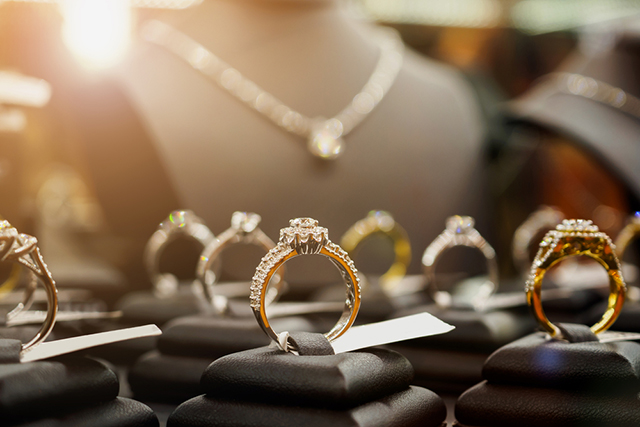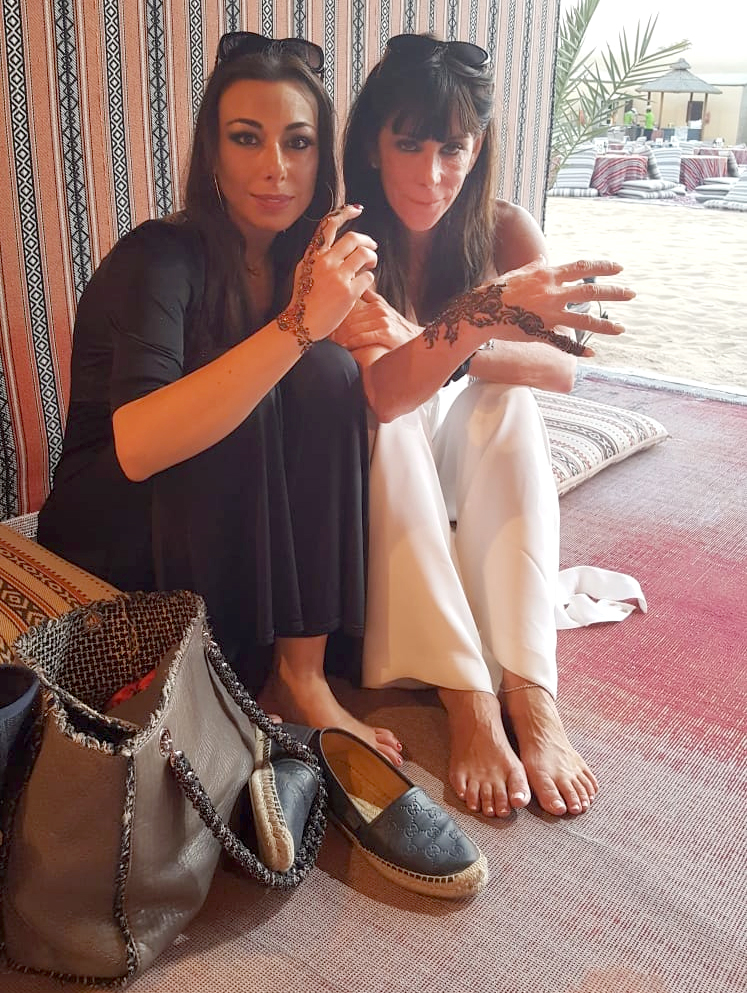Choosing the Right Metal for Any Jewelry
As the oldest form of human creativity and expression, jewelry has long been a treasured, integral part of fashion and culture all over the world.
From the days of shells and bones to metals and gemstones, jewelry has evolved drastically while always playing a pivotal role in our lives. Jewelry has always been an accessory reserved for special and ceremonial occasions, allowing us to connect with people from all over the world.

But buying jewelry nowadays has become more personal. It’s a part of us…a statement that becomes updated and redefined over time. Jewelry is no longer just about wearing an accessory that completes an outfit. It has evolved to become a statement unto itself, and people are unapologetically expressing themselves and making careful decisions about the quality of the pieces they are buying.
Selecting a piece of jewelry is all about choosing between various aesthetic patterns, some of which include colors, hues, brilliance, and more. Consumers nowadays are more conscious of the quality and integrity of their purchases, especially when it comes to jewelry.
When buying diamonds, consumers must invest their time into research in order to be well-informed about the characteristics of a diamond, including its origin, source, and distribution. But since metals are the primary material used in jewelry, it’s also important to consider your preferences.
There are a variety of metals available for your jewelry settings. Gold, silver, platinum, and palladium are the most typical of the precious metals available to us.
Here is everything you need to know about the most popular metals used in jewelry.
1) Gold
Gold is one of the oldest and popular traditional precious metals used for making jewelry. The shiny yellow luster of this metal has won hearts, with many considering it to be one of the most desirable precious metals for jewelry and for several other accessories, such as fine pens or other non-jewelry specific items. Gold is the most malleable of all metals, and is a preferable choice for various intricate designs and styles. In its pure form, gold is soft and ductile.
On its own, gold is sensitive, and may be damaged or lose its value in settings. Gold is a metal that is often mixed with other metals such as silver or copper that helps in adding to its hardness, resistance, and durability, which is called an alloy. When you are thinking about purchasing a piece and are at the location to buy gold jewelry, you may be offered options for various gold densities.

Karat (k) is generally used to measure the purity of a specific metal in alloys. Pure gold jewelry is defined as 24k, which means it’s jewelry made from pure gold that has not been combined with any other metals. As mentioned, when gold is in its purest alloy (24k), it may be more sensitive to being deformed or damaged in several different ways. When buying gold jewelry, it is preferable to have a metal alloy of 18k or below. Jewelry containing gold alloys below 14k is not preferable for jewelry, as it compromises the quantity of the gold and the quality of the jewelry. Apart from hardness and durability, gold is also combined with other base metals for obtaining desirable shades and hues when producing jewelry. Popular colors for gold alloys are yellow, white, and rose gold. Some other colored gold alloys like green gold and gray gold are also available.
Here’s an easy guide to the different Karat weights:
Karats | Description |
24 karat | This means that your jewelry metal contains 100% gold with no alloy metals. This is not preferable as it can easily bend or get damaged. |
22 karat | This indicates that your jewelry contains 91.7% gold. Not preferred as 22 karat gold jewelry can get bent or damaged easily. |
18 karat | This indicates that your jewelry contains 75% gold and 25% other alloy metals like silver or copper. Gold jewelry with a karat weight of 18k or less is preferred for jewelry, as it becomes relatively harder. Preferred especially for jewelry with diamonds or gemstones. |
14 karat | 14 karat gold jewelry contains 58.3 % gold and 41.7% of other alloy metals. Used for jewelry because of its great hardness. |
10 karat | Any jewelry setting with a karat stamp below 14 k is not preferable for jewelry, as it compromises the quantity of the gold and the quality of the jewelry. |
White Gold
White gold is another desired shade of gold for jewelry lovers who love their metals in hues of silver. White gold is made by mixing an alloy of pure gold with silver metals such as silver, nickel, or palladium. High karat white gold alloys are more resistant to corrosion than pure or sterling silver. In many countries, the use of nickel is considered toxic as it may cause allergies when worn for long periods of time.
Yellow Gold
Yellow gold is the most popular shade of gold used worldwide. Gold in its pure form is always yellow in color. Yellow gold is made by mixing pure gold with alloy metals of copper, silver, and zinc. Different shades are also produced depending on the karat weight of gold.
Rose Gold
Rose gold gets its romantic pink hue from gold and copper alloys. The differences in shades of rose gold are caused due to the copper alloy used in the metal. The higher the quantity of copper used in the alloy, the stronger is the color of pink/red in the jewelry.
Another important factor to consider while buying gold or any other precious metal jewelry setting is its Hallmark. The Hallmark is usually a Karat stamp, accompanied by a registered trademark or the maker’s mark stating that the metal that’s being purchased adheres to global standards of purity. It acts as a guarantee of the purity of your gold jewelry. Generally, the hallmark on the jewelry appears with the karat weight of the jewelry along with K, KT, or Karat.

When purchasing jewelry, terms like gold plated and gold-filled may come up. Sometimes metals may be gold plated or filled to make it more economically beneficial for the customer. Gold filling is when a solid layer of gold is bonded to a base metal, whereas in gold plating, a thin layer of gold covers the surface of another metal.
2) Platinum
Platinum is a rare, desirable, and expensive precious metal. The beautiful white color of platinum does not tarnish, corrode, or need polishing very often. It is four times stronger than gold and also one of the strongest metals, making it durable enough to last for generations.

The silvery-white luster of the metal makes it a popular choice among jewelry lovers. Unlike gold, platinum is a naturally white metal and does not necessarily need to be combined to become an alloy. However, when used for jewelry, platinum is often mixed with copper, cobalt, and other metals in the same group such as iridium, palladium, rhodium, osmium, and ruthenium to make it more malleable.
,The hallmark on your jewelry will indicate if it is an alloy and the quantity of the alloy (in parts per thousand.) To identify the purity of your platinum jewelry, make sure you look for a PLAT, PLT, or PLATINUM hallmark stamp on your jewelry. Pure platinum means that it must contain at least 95% of only pure platinum. If the purity level of platinum is less than 90%, it must be labeled under platinum alloy. For example, if your platinum jewelry is marked as 950 PLAT, it means that your jewelry contains 950 parts of platinum out of 1000 and 50 parts of other metals.

3) Silver
Silver is one of the oldest precious metals used for jewelry making. Silver is a very soft metal and is extremely malleable. Since silver is so malleable, silver alloys are often used for jewelry settings.
Sterling silver (.925) is an alloy made up of 92.5% silver and 7.5% of copper. Other metals may be added to silver to increase the hardness of the alloy, making it more durable and creating a color and luster that entices consumers. Silver may also be finished with other metals, such as rhodium, to prevent tarnish and give the metal its magnificent luster. It is always recommended to take good care of your jewelry because whatever metal it is, it is still prone to scratches and corrosion.
Argentium Silver is a relatively new non-tarnish alloy. If worn daily and excessively exposed to harsher conditions, the metal may still tarnish. Non-tarnish alloys usually require less maintenance than sterling. They contain a minimum of 92.5% silver, but some will have more silver. Its alloys are copper and germanium.
Just like gold, silver is also plated and filled. Silver plated means that a small percentage of silver is used to cover the surface with a thin layer of silver. Silver-filled means that it is not an alloy because the metal used is not the same throughout the whole material. Instead, it has sterling silver on the surface and is filled with either 5% or 10% of sterling silver by weight, which is fused with heat and pressure to a brass core. It tarnishes easily, and should only be soldered with precise equipment and special training. Since the price of silver has gone down over time, this option is less common in the market. There is also no legally approved quality stamp standard for this type.
It is always important to look out for Hallmark stamps to identify what the quality is of the silver jewelry.
4) Palladium
Just like gold, silver, and platinum, palladium is also categorized as a precious metal. Palladium is part of the platinum group of metals, along with iridium, rhodium, osmium, and ruthenium. Like platinum, palladium is also naturally white in color and does not have to be alloyed with other metals to enhance its color, but may be alloyed to improve its quality.
Less expensive than platinum, palladium is light and is a rare white metal perfect for jewelry, especially wedding rings and bands. Palladium jewelry does not require plating and it does not tarnish or corrode. Since it is lighter in weight, it is the preferred metal for making intricate jewelry pieces.
Palladium may be alloyed with other metals such as ruthenium, copper, cobalt, iridium, or rhodium for making jewelry. The globally recognized purity hallmark of palladium is 500, 950, and 999 (parts per thousand.) It is recommended to buy an alloy of palladium that has at least a 90% purity level. The metals of platinum and palladium are so indistinguishable that jewelry pieces always require proper Hallmarks. The Hallmark symbol of platinum and palladium used to also be quite similar, and have since been changed. Palladium is also hypoallergenic, which means the metal may be preferable for anyone who has sensitive skin.

Image source: http://www.assayoffice.co.uk
5) Titanium
If you are interested in a relatively new metal used for jewelry which is durable, light, and grayish, you may consider titanium as one of your choices. Becoming prominent in markets in the 1990’s, titanium is a great choice for a piece of jewelry that you intend to wear daily. Titanium is hypoallergenic in nature and is ideal for customers who have sensitive skin.
Titanium is almost half of the weight of steel, but is very resistant to damage and any tarnishing. Titanium alloys include aluminum, vanadium, iron, molybdenum, and copper. One of the most common compositions is known as “aircraft grade.” It is the composition famously used for aircraft construction. It is a blend of 6% aluminum, 4% vanadium and 90% titanium, and is one of the strongest of known compositions for metals.
When buying titanium jewelry it is very important to remember that once the piece has been made, it is very difficult to be resized or soldered.
6) Stainless Steel
Stainless steel is known for its strength, and has been widely used in industrial materials throughout history. Over the years, using metals like stainless steel has become more and more prominent, and is a popular choice for fashion jewelry, especially among men. Stainless steel has a silvery-white luster. Compared to other white metals like silver, platinum, and palladium, it is economically savvy and has a higher resistance to withstand scratches or corrosion. It is also a great choice for hypoallergenic jewelry, which means anyone who is sensitive to metals can consider steel as a great choice for their jewelry.
Stainless steel is an alloy with a minimum of 11% chromium by mass and a maximum of 1.2% carbon by mass. It is advisable to purchase surgical steel jewelry, as it is completely hypoallergenic. Jewelry made out of steel is generally light, making it a preferable choice for your daily wear jewelry.
7) Tungsten
In recent years tungsten has become a popular choice for jewelry, especially for wedding rings and bands, because of its quality and affordability. Tungsten, derived from the Swedish word meaning, ‘heavy stone,’ indicates a lot about the metal’s hardness and strength. It is the heaviest metal used in jewelry, and therefore has a very high melting point compared to all other metals used for jewelry settings. It is an affordable metal for people looking for a less expensive option as opposed to platinum or palladium. High-quality tungsten is hypoallergenic in nature, making this metal perfect for those whose skin is sensitive towards metals. This silvery-white strong metal which is resistant to being tarnished and experiencing corrosion is a perfect choice for your everyday wear jewelry.
Terms such as Tungsten and Tungsten carbide are used interchangeably in the industry. Tungsten as a metal in its pure form may not be used for jewelry. It becomes an alloy when mixed with nickel, cobalt, and predominately carbon, which then in term produces Tungsten Carbide. Tungsten is a hard metal, but is brittle in nature, which means it can break or chip easily. Carbon in tungsten helps in making the metal more durable, strong, and lustrous.
Like titanium, tungsten may not be resized or soldered. Make sure when you are set on buying a jewelry piece you are very sure this will be a great piece in all aspects in the long-run. In case of any size or design adjustment, mostly the entire tungsten jewelry piece must be remade. Tungsten jewelry pairs very well with other metals and can also be used to incorporate inlays.
Conclusion
When it comes to choosing a piece of jewelry and the setting, there are several metal options to choose from. Metals, which may be used for jewelry settings, are not limited to gold, silver, platinum, palladium, titanium, stainless steel, and tungsten.
As a savvy consumer, it’s necessary to be fully aware about what you are buying before you purchase it. Apart from choosing the right metal, it is necessary to consider various factors such as quality of the metal, the color, the aesthetic appeal, and whatever else is important to you.
About The Author
Debbie Azar is the Co-Founder and President of Gemological Science International (GSI), one of the largest gemological organizations in the world, and a distinguished leader in the global diamond and jewelry industry. As an executive with extensive knowledge of the jewelry and gem lab industries, her entrepreneurial skills and vision have helped GSI achieve rapid and continuous growth worldwide, establishing 13 leading-edge gemological facilities on four continents. She currently serves on the boards of the Jewelers Vigilance Committee, Responsible Jewellery Council, and Jewelers for Children, and is a member of the 24 Karat Club of New York. She has been featured in Forbes, Daily Mail, Good Morning America, Bloomberg, Bloomberg Businessweek, Fox Business, Fox5, CBS2, BOLDTV, Varney&Co, The Street, and NASDAQ, among others.











































